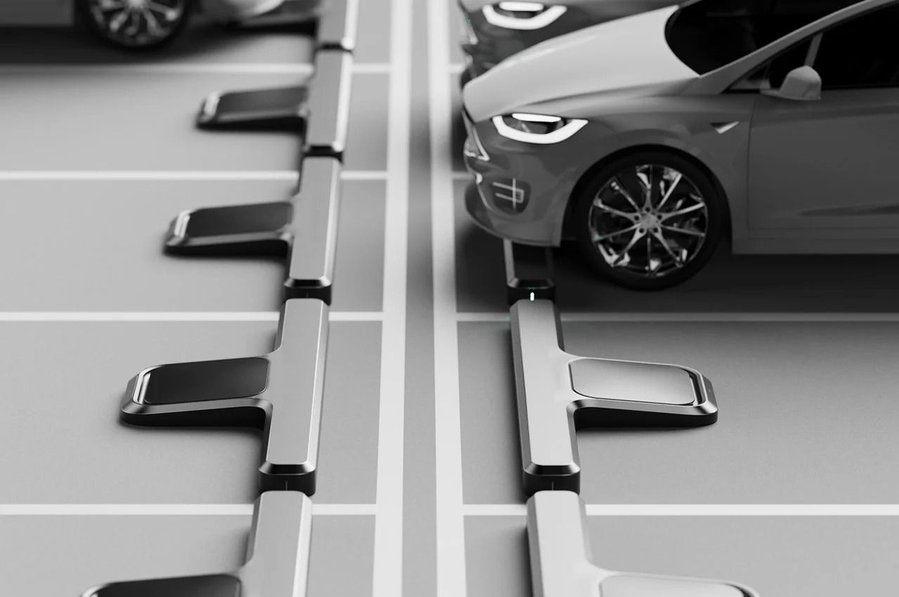In a world where technology evolves at a breakneck pace, the introduction of wireless EV charging is a game-changer for urban infrastructure. According to a recent report by Bloomberg Green, the global wireless EV charging market is expected to grow exponentially, reaching approximately $206 million by 2027. This innovation not only simplifies the daily lives of electric vehicle owners but also holds the potential to significantly transform cityscapes. In this article, we will explore how wireless EV charging is revolutionizing urban infrastructure, the technology behind it, and what it means for the future of urban mobility.
The Rise of Wireless EV Charging
What is Wireless EV Charging?
Wireless EV charging, also known as inductive charging, uses electromagnetic fields to transfer energy between a charging pad embedded in the ground and a receiver installed in the car. This technology eliminates the need for cables, making the charging process more convenient and seamless.
How Does It Work?
- Charging Pad Installation: Charging pads are installed in strategic locations, such as parking lots, garages, and even at traffic stops.
- Vehicle Integration: Cars need to be equipped with a compatible receiver to capture the energy from the pad.
- Charging Process: When a vehicle is parked over a charging pad, the system automatically initiates the charging process, powering the battery without any physical connection.
Benefits of Wireless EV Charging
- Convenience: No more plugging and unplugging cables.
- Efficiency: Reduces time spent on charging, as vehicles can charge while parked or even on the move.
- Safety: Minimizes the risk of tripping over cables, and reduces wear and tear on charging ports.
- Aesthetics: Keeps urban landscapes neat and clean, free from cluttered charging stations.
Impact on Urban Infrastructure
Transforming Cityscapes
As cities worldwide aim to become smarter and more sustainable, wireless EV charging plays a crucial role. This technology supports the integration of electric vehicles into urban ecosystems by:
- Reducing Infrastructure Footprint: By eliminating the need for visible charging stations, cities can reclaim valuable space and enhance urban aesthetics.
- Enabling Smart Roads: Future cities can incorporate wireless charging pads into roadways, allowing vehicles to charge while in motion, thus reducing downtime and congestion.
Supporting Sustainability Goals
With transportation accounting for a significant portion of urban emissions, transitioning to electric vehicles is a priority. Wireless charging facilitates this shift by:
- Encouraging EV Adoption: The ease of use makes EVs more appealing to drivers, speeding up the transition from fossil-fuel vehicles.
- Reducing Carbon Footprint: Less reliance on physical infrastructure means fewer resources used and lower emissions from manufacturing and maintenance.
Practical Considerations for EV Owners
How to Charge Wirelessly
For EV owners considering this technology, here’s a simple guide:
- Check Compatibility: Ensure your vehicle is compatible with wireless charging. Brands like Tesla and Hyundai are leading the way in integrating this technology.
- Locate Charging Spots: Use apps or maps that show wireless charging locations in your area.
- Monitor Charging: Most systems provide real-time updates on charging status and efficiency.
Where to Buy Compatible Vehicles
Several automakers are investing in wireless charging technology. Here’s a list of top brands to consider:
- Tesla: Known for innovation, Tesla is actively working on incorporating wireless charging into its vehicles.
- Hyundai: A frontrunner in EV technology, Hyundai offers models that support wireless charging.
- Volkswagen: As part of its commitment to sustainability, Volkswagen is exploring wireless solutions for its electric lineup.
What to Compare
When evaluating wireless charging solutions, consider:
- Charging Speed: Higher power systems provide faster charging times.
- Cost: Initial setup can be costly, so weigh it against long-term benefits.
- Availability: Check the availability of compatible charging sites in your region.
Conclusion: The Future of Urban Mobility
Wireless EV charging is not just a technological advancement; it’s a catalyst for change in urban landscapes. As we move towards a more sustainable and connected future, the adoption of wireless charging will play a pivotal role in shaping modern cities. For electric vehicle owners, this technology offers unprecedented convenience and aligns with global sustainability goals.
Are you ready to embrace this revolutionary shift in urban mobility? Share your thoughts, and let’s explore how we can drive the future together. As cities continue to evolve, wireless EV charging might just be the key to unlocking a cleaner, smarter, and more efficient urban environment.

